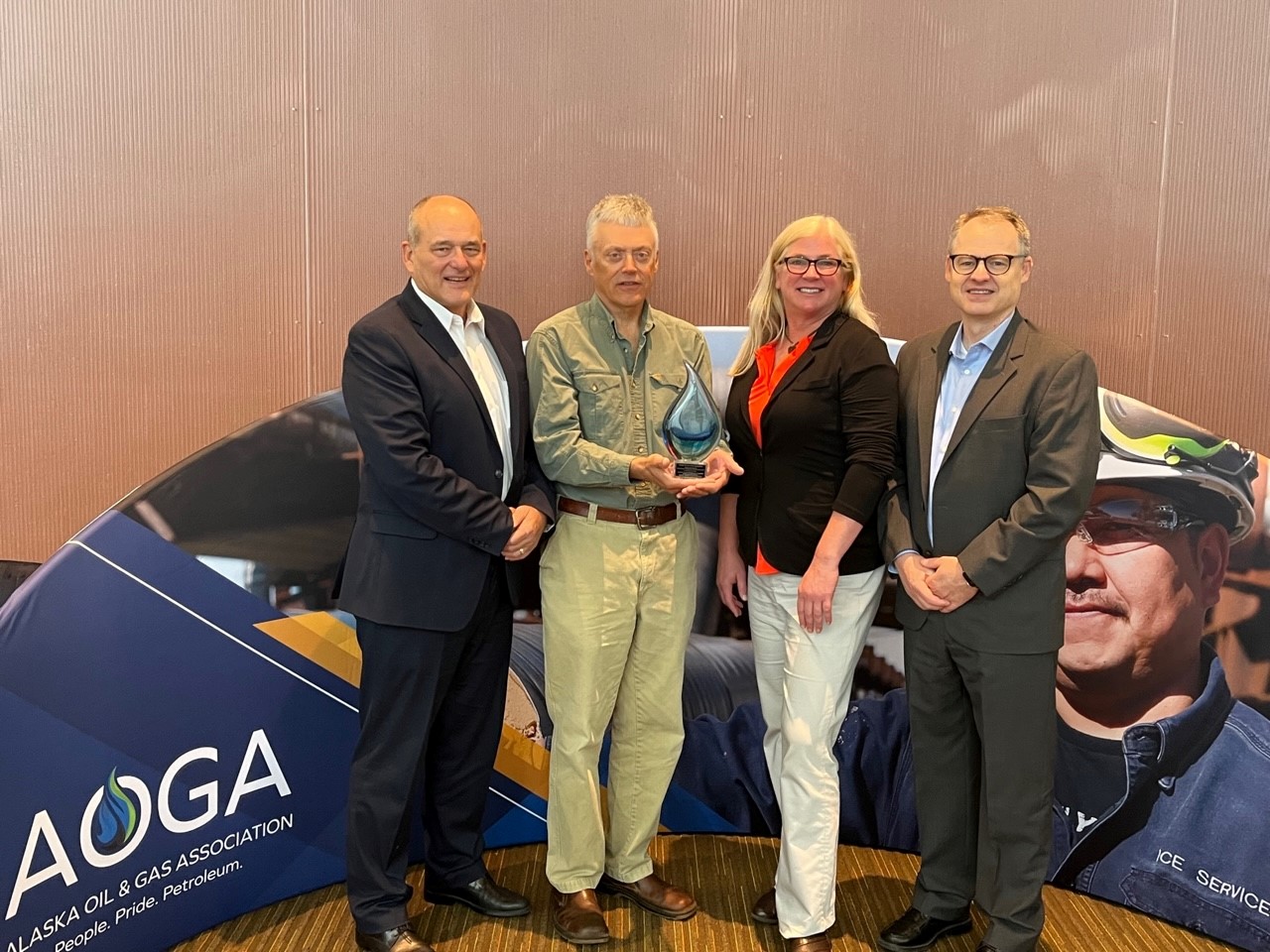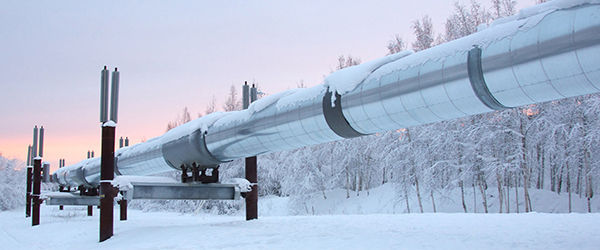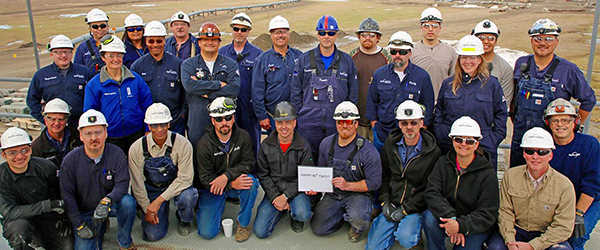Alyeska receives industry honor for oil response project
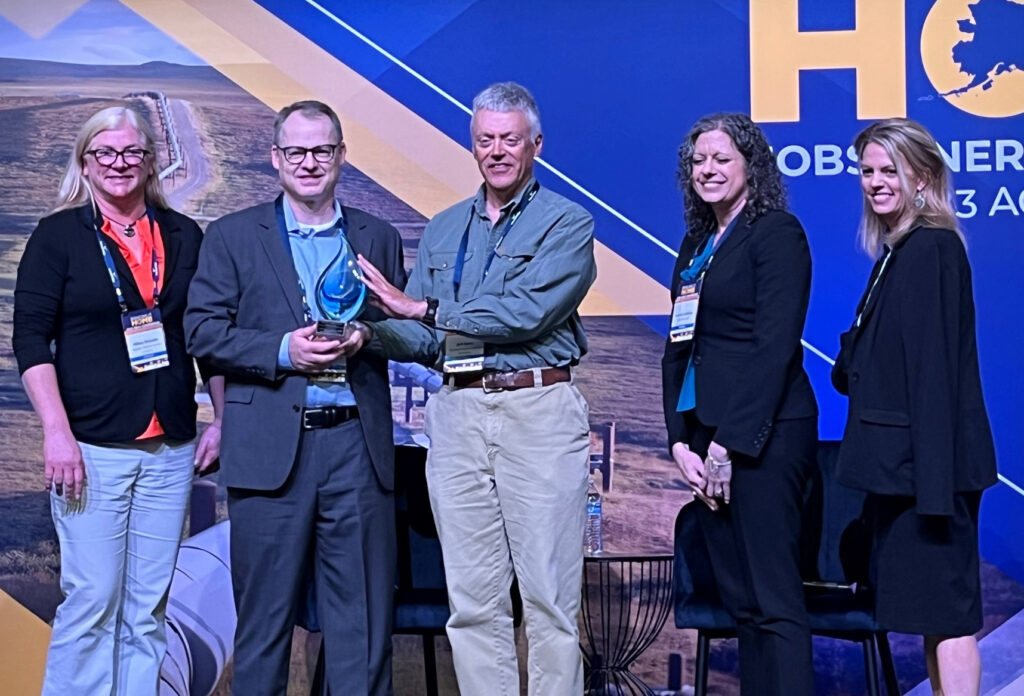
Alyeska’s Squirrel Creek Oil Response Capability Enhancement Project was recently named Project of the Year for Environmental Stewardship and Innovation Award at the Alaska Oil & Gas Association’s 2023 Conference.
The project’s objective was to create a more effective recovery by installing a structure in Squirrel Creek, near TAPS Milepost 717 and Richardson Hwy. Milepost 79, 20 miles south of Copper Center, that mimics natural eddies, resulting in calmer water and a deeper pool that naturally collects debris. After completion, the enhanced containment site proved to perform perfectly after an Oil Spill Contingency Plan exercise was completed: sections of oil spill boom diverted water flow into the collection pool, allowing the skimmer to recover product if necessary and pump into a vacuum truck with road access.
“We’re proud to receive recognition for this work, which is an excellent example of how Alyeska field teams innovate and optimize protection methods and are dedicated to environmental stewardship,” said Jan Shifflett, Alyeska’s Environment Manager. “This work was 100 percent self-initiated by the Glennallen Response Base team as an opportunity to reduce environmental risk in the event of a mainline release. It was not required by any agency, but required extensive communication and approvals from agencies to complete.”
Sponsored by Stoel Rives LLP, AOGA’s Project of the Year for Environmental Stewardship and Innovation Award honors an Alaska oil and gas industry project that demonstrates superior environmental stewardship in its area of design and construction or operation, and/or an innovative approach that sets a new standard for industry design, construction, or operation in Alaska. AOGA notes that given the unique climate and ecosystems in Alaska, local industry has a proud tradition of environmentally prudent and technologically innovative projects and operations. This award endeavors to highlight those projects or strategies that are both successful and represent innovation in their operation or approach.
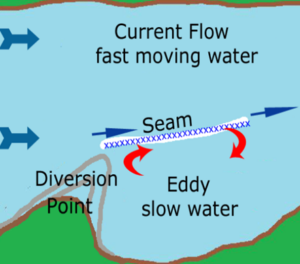
Here’s the project overview from the AOGA Award nomination:
Alyeska Pipeline Glennallen Response Base (GRB) Civil Maintenance Coordinators (CMCs) identified opportunities to enhance oil spill response capability in the Squirrel Creek area near Pipeline Milepost (PLMP) 717.28 and Richardson Hwy. Milepost 79, 20 miles south of Copper Center. The location is part of Alyeska’s Pipeline Oil Discharge Prevention and Contingency Plan (CP-35) as Containment Site (CS) 11-5 and has been tested by several drills and exercises in past years. The site is located two miles downstream of the TAPS crossing at Squirrel Creek near Richardson Highway Milepost 79.58, just upstream of the Tonsina River. Squirrel Creek and the Tonsina River are tributaries of the Copper River watershed, a world-class resource.
The objective was to create more effective recovery capability by installing a structure that mimics natural eddies similar the model below, resulting in calmer water and a deeper pool that naturally collects debris.
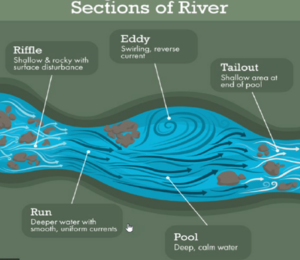
The scope of work included widening the stream by approximately 20 feet and deepening by one foot in shallow locations. Small quantities of armor rock excavated from the site were added to the perimeter of the eddy to maintain the desired pattern of water flow and protect the bank from erosion. Small boulders were also used to enhance a downstream riffle and to create an outlet controlling water flow conditions in the eddy. An upstream diversion point narrowed the stream and protected the eddy from collapsing during high flows. Excavated materials were reused as much as possible including organic soils, root wads, and large rock/boulders. Remaining disturbed areas were seeded and fertilized. Vegetation increased the stability of the soils and also provided visual aesthetics to the area.
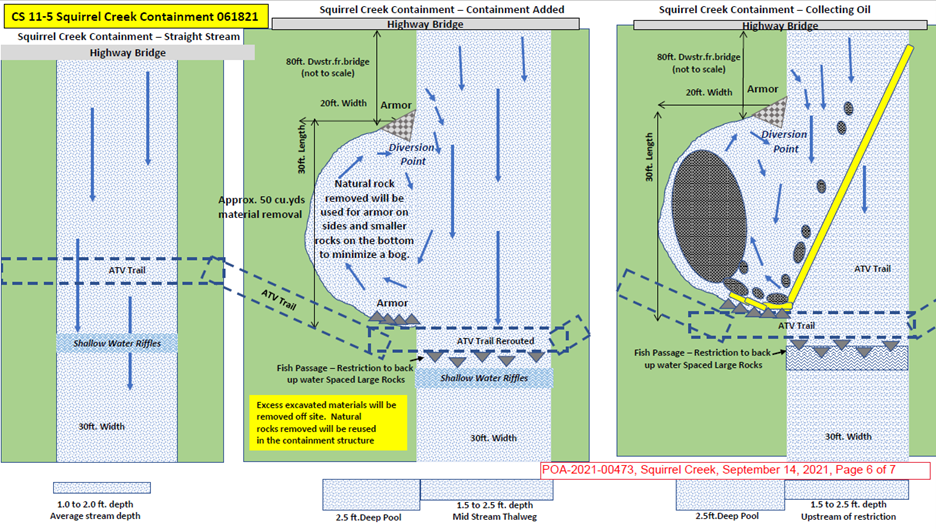
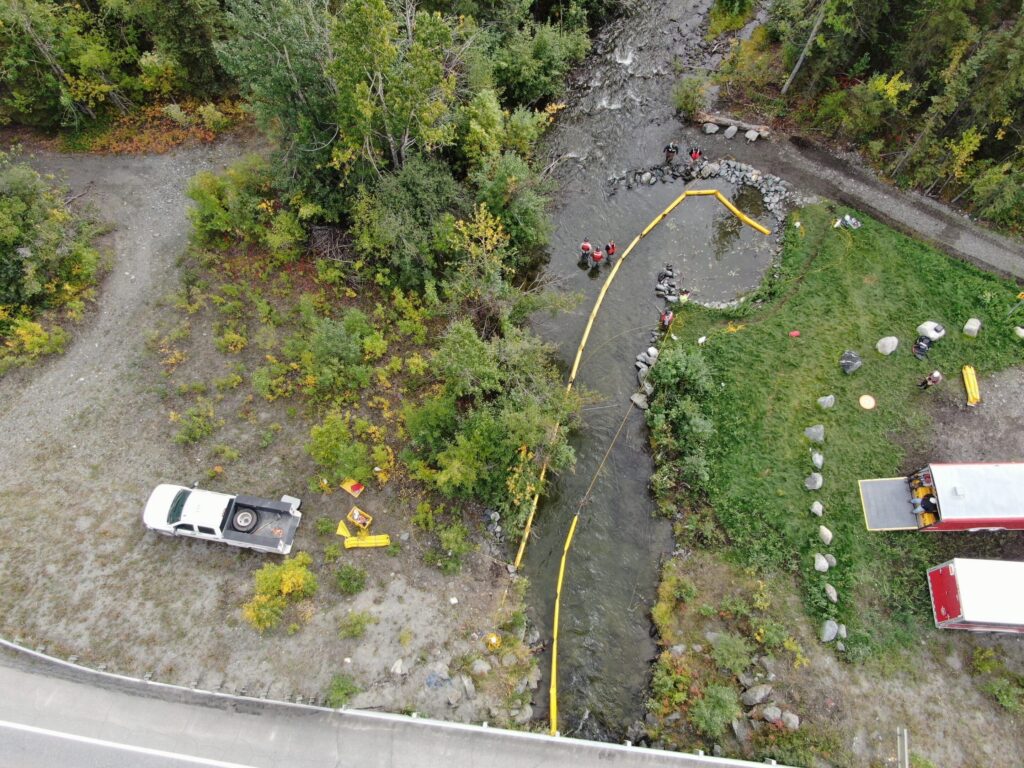
The modification allows capturing oil more easily and effectively by utilizing boom to direct it to the larger collection site. The structure also provides deep water to operate high-capacity skimmers and remove the oil from the stream before it enters the larger Tonsina River. This enhancement is a win – win, both by improving fish habitat (creating a resting pool) and by improving our ability to protect the Tonsina River.
After project completion, a scheduled OSCP exercise demonstrated the enhanced containment site worked perfectly. Sections of oil spill boom were able to divert water flow into the collection pool where the skimmer could recover product if needed and pump into a vacuum truck with easy road access. The road accessible collection area helps ensure better environmental protection downstream in this sensitive aquatic region. This low-cost enhancement was designed and implemented by the GRB CMCs and Ahtna crews by their own initiative and design, with Engineering and other departments supporting along with agencies providing necessary permits.
